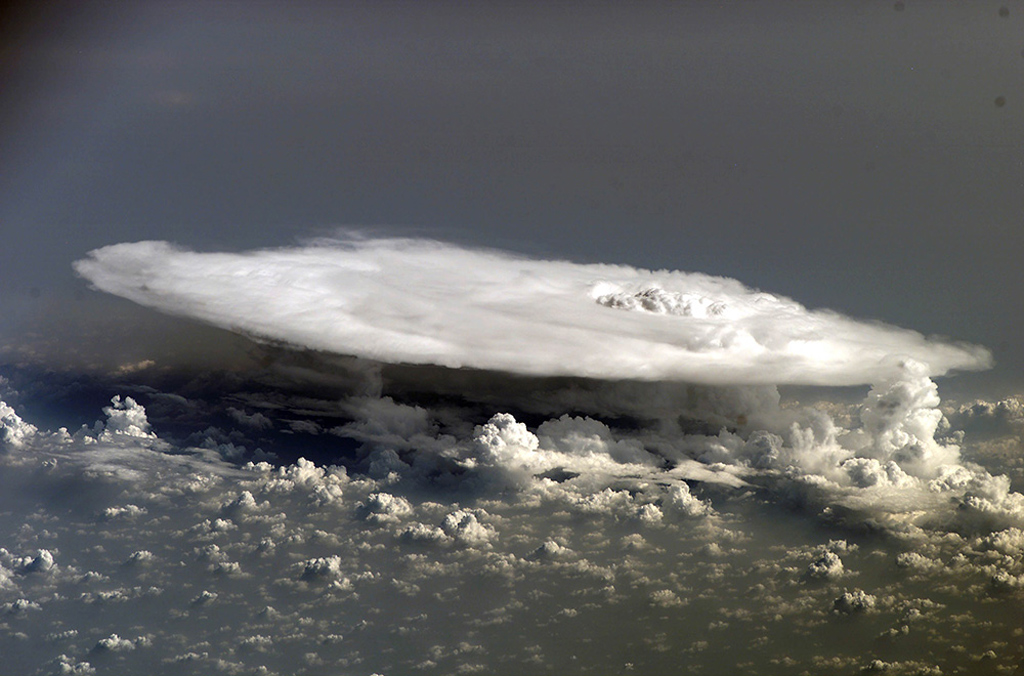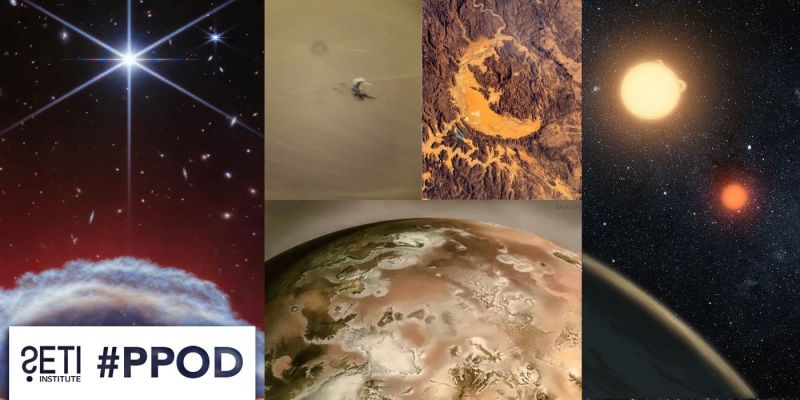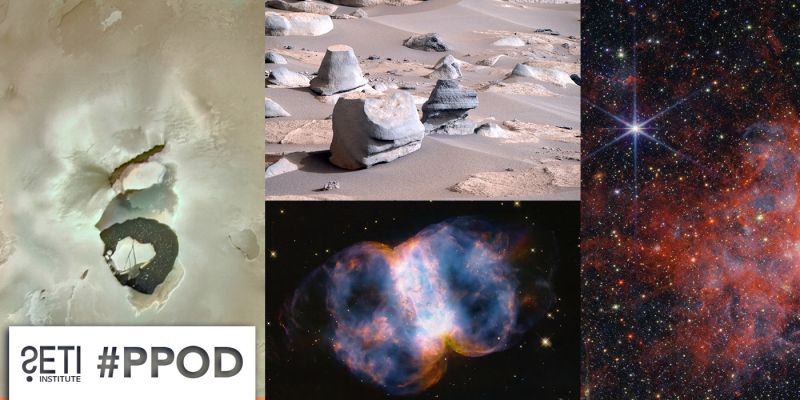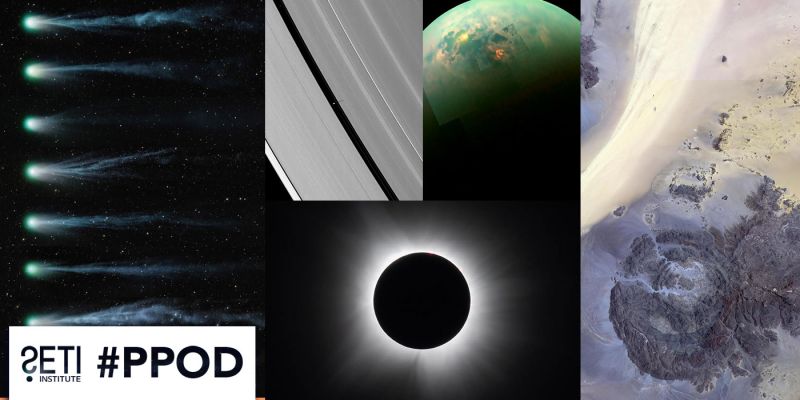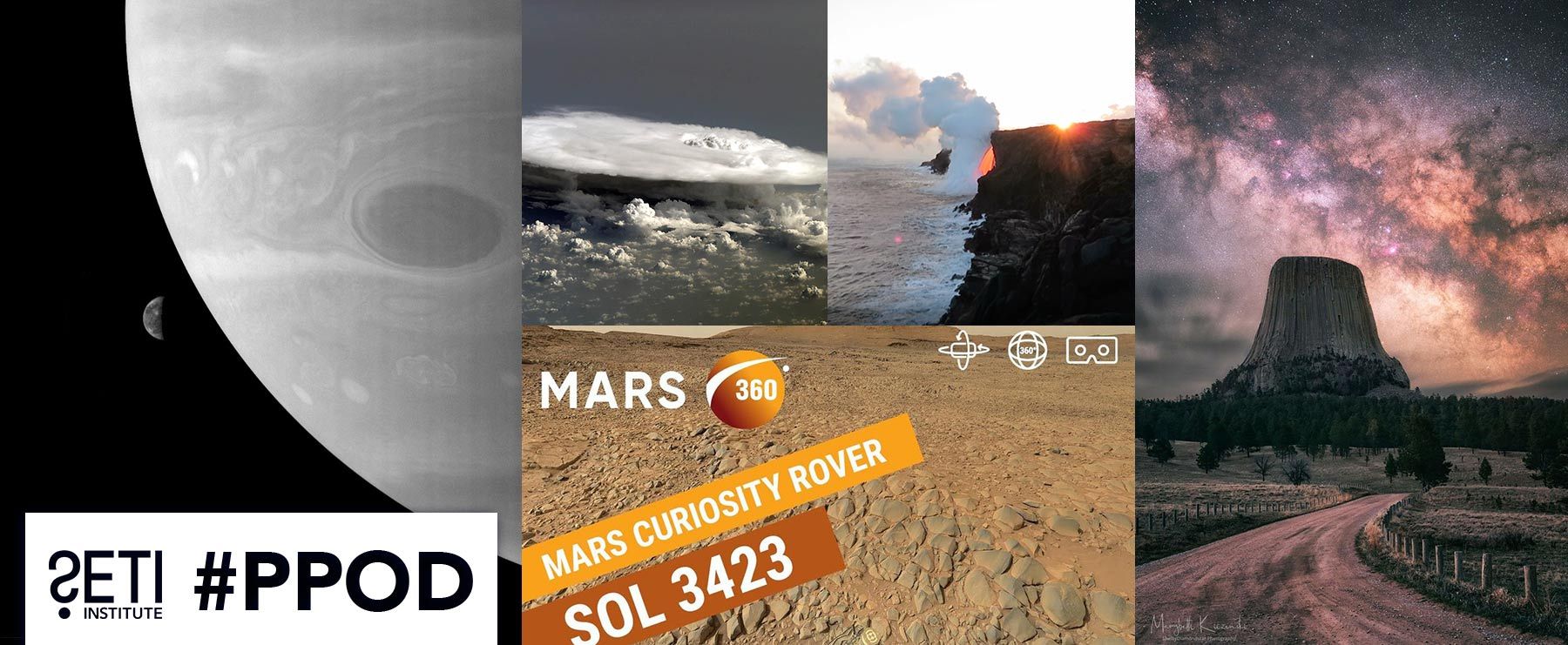
Planetary Picture of the Day
Week of April 04, 2022
Clouds, eruptions, magmatic instrusions. Plus, what does Curiosity see now?
Monday, April 11, 2022

Written by Susanne Schwenzer
Planetary Geologist at The Open University
NASA's Mars Exploration Program
Source images credit: NASA / JPL-Caltech / MSSS
Stitching and retouching: Andrew Bodrov / https://buff.ly/3reKB28
VIDEO: https://buff.ly/3jreFU8
NASA's Mars Curiosity Rover Martian Solar Day 3423
The images for panorama obtained by the rover's 34-millimeter Mast Camera. The mosaic, which stretches about 30,000 pixels width, includes 128 images taken on Sol 3423 (March 23, 2022).
The MAHLI image above is probably somewhere in the pile of rocks you saw under the turret in yesterday’s image. From up close, you can admire the nature of those rocks: broken up with sharp edges. The eagle-eyed geologists amongst you might think they look like ventifacts, my fellow blogger Mark had mentioned those already in his sol 3419-3420 blog. Ventifacts are rocks, shaped by wind coming from the same direction(s) for a very long time. The wind carries fine particles that cause the abrasion to shape those rocks. But, as we all know, looks can always deceive at first glance. So, to get behind what actually happened here, and especially why it happened in some ridges that give the gator-back impression, Curiosity is taking many more images today and of course adding some chemistry to the mix, too!
APXS investigates the target “Breakyneck,” which is one of those sharp and angular rocks, and “Redscarhead,” which is a smoother looking and more flat rock that looks different, more like the bedrock we saw earlier. ChemCam has two chemistry investigations, pointing LIBS at “Breakyneck” and at another pointy, sharp-edged rock called “Swinton.”
Mastcam takes a record seeking 132 frames divided into four observations. Of course, always faithful to ChemCam, there are two images to document each of the LIBS targets. And then there is a large 69 frame mosaic on what was dubbed a gator back – more geologically speaking it is a ridge made of ventifacted rocks. The remaining 61 frames are looking at the landscape behind the ridge in front of us to find out how the washboard impression we have from orbit links to the ground observations. ChemCam has two imaging observations, too, both of them looking into the distance at the big outcrop on the other side of the plateau to find out more about the many sedimentary structures visible in this area. Finally, Mastcam also pleases the mineralogists and takes a multispectral image on the target “Calder,” which is yesterday’s APXS target.
The next drive is short to an area we have seen more rock textures, and where we hope to find out a lot more about this interesting area. Stand by for more images of sharp, pointy, laminated, and otherwise interesting rocks.
Tuesday, April 12, 2022
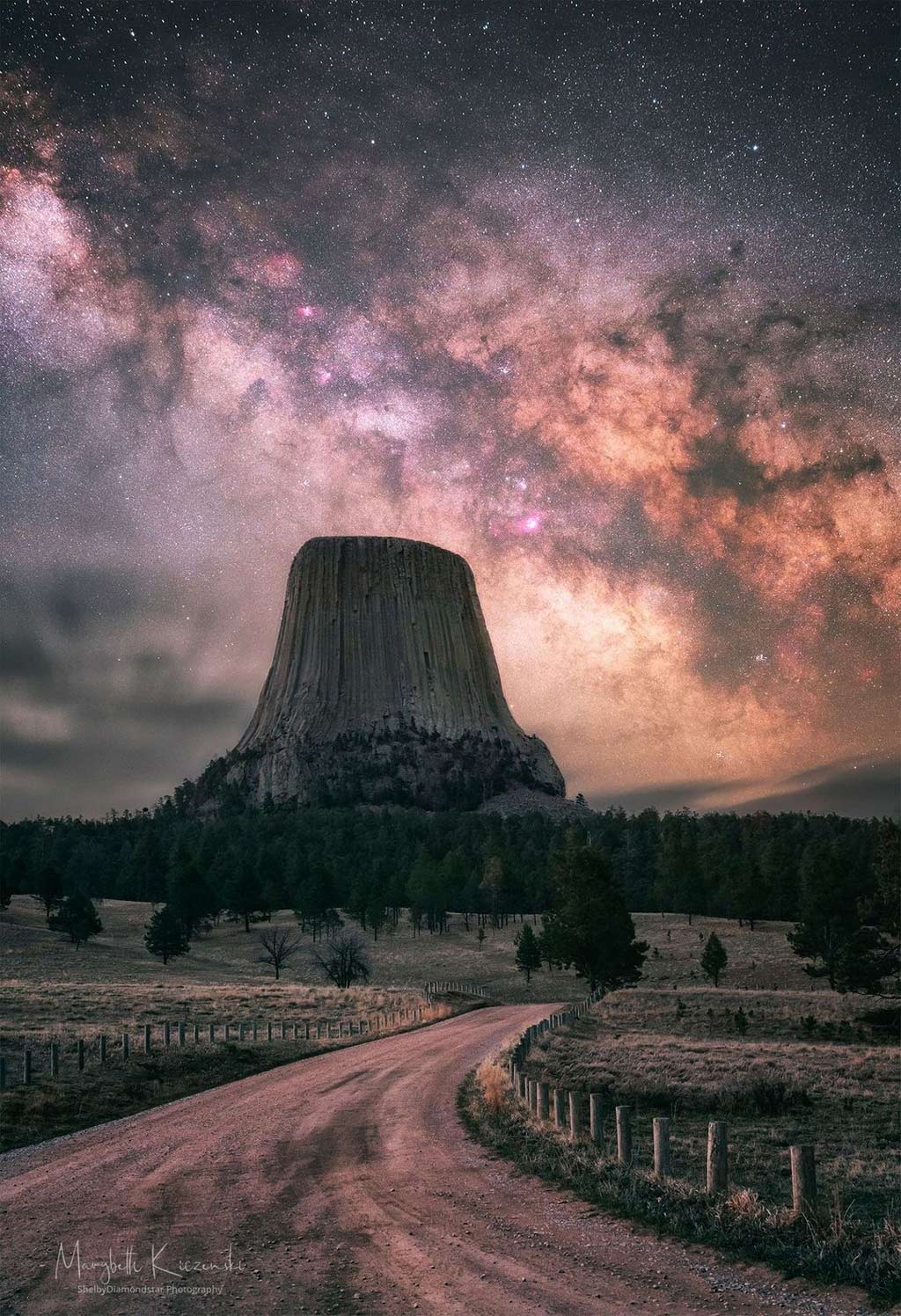
Credit: Shelbydiamondstar Photography
Devil's Tower and the Milky Way
Devil's Tower in Wyoming was formed when a shallow magmatic intrusion underground cooled slowly. The slow cooling caused columnar jointing or cracking in the rocks, which were revealed here once the surrounding sedimentary rock was eroded away. (Plus, we're sure you all remember how “important” this is!
Wednesday, April 13, 2022
Credit: USGS
Kīlauea Eruption, 2017
This is not a recent eruption, but it is spectacular, showing a large hose of very hot, molten rock that made its way up from far below the surface for a dip in the ocean on January 29, 2017, when Kīlauea was acting up again. Fire and water met in a fierce display of water vapor that threw bits of lava up to heights over 27 meters (30 yards).
Thursday, April 14, 2022
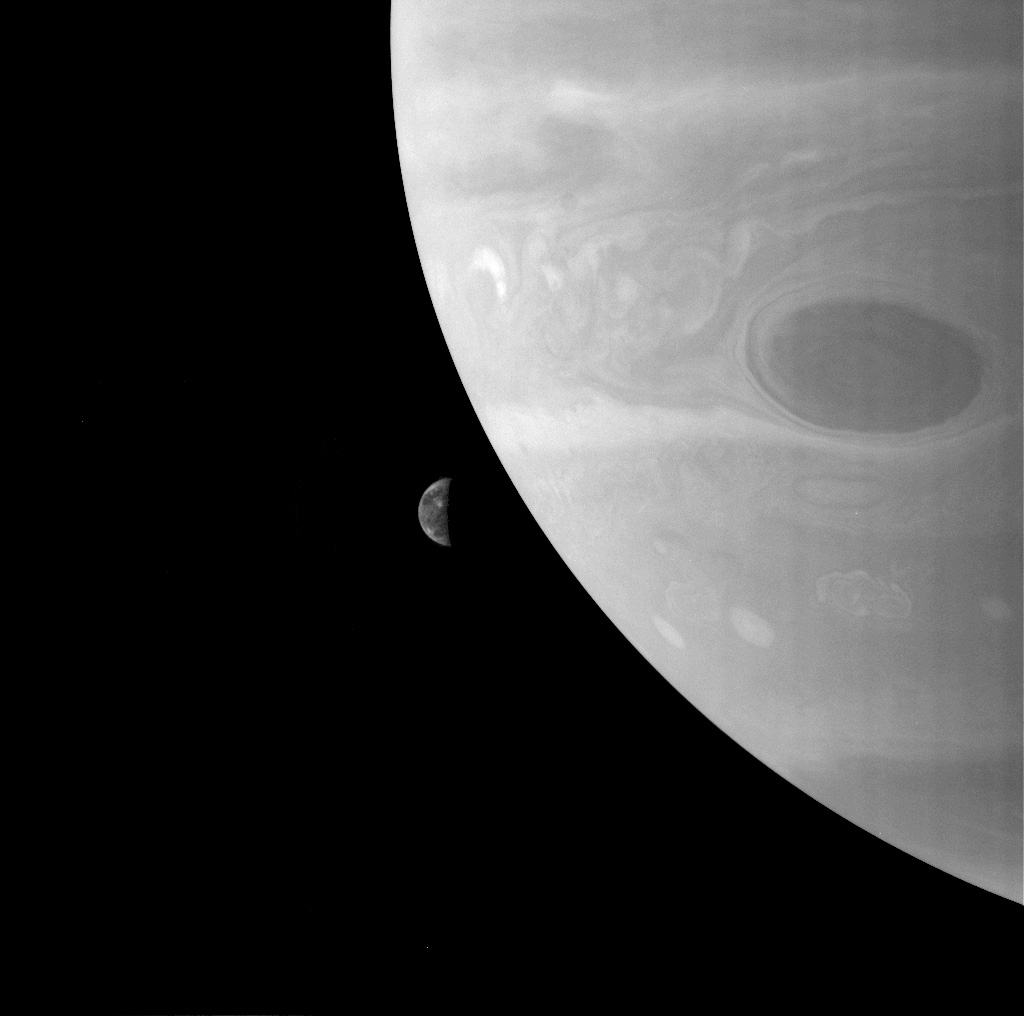
Credit: NASA / PDS / OPUS
Ganymede
Cassini photographed the relatively tiny Ganymede juxtaposed against giant Jupiter.
Friday, April 15, 2022
Credit: NASA
Cumulonimbus cloud over Africa
High above the African continent, tall, dense cumulonimbus clouds, meaning 'column rain' in Latin, are the result of atmospheric instability. The clouds can form alone, in clusters, or along a cold front in a squall line. The high energy of these storms is associated with heavy precipitation, lightning, high wind speeds and tornadoes.

